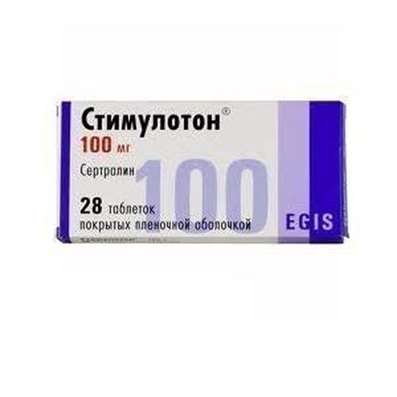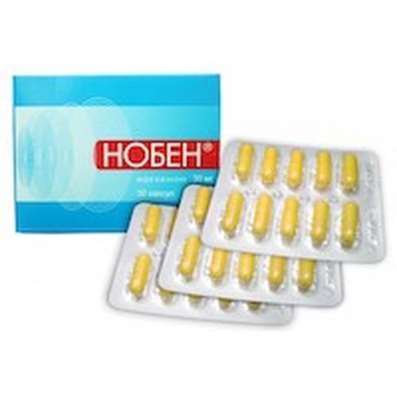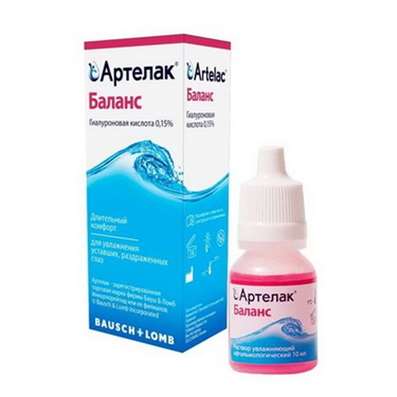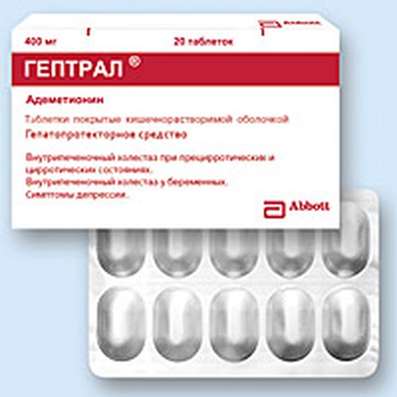Instruction for use: Spasgan
I want this, give me price
Active substance Metamizole sodium + Pitofenone + Fenpiverinium bromide
ATX Code N02BB52 Metamizole sodium in combination with other drugs, except for psycholeptics
Pharmacological groups
NSAIDs - Pyrazolones in combinations
Nosological classification (ICD-10)
K59.8.1 * intestines Dyskinesia
Pain smooth muscle spasm, Pain spasm of smooth muscles (renal and biliary colic, intestinal spasms, dysmenorrhea), Pain spasm of smooth muscles of internal organs, Pain spasm of smooth muscles of internal organs (kidney and biliary colic, intestinal spasms, dysmenorrhea), intestinal hypomotility, Hypotonic dyskinesia of the colon, GIT Dyskinesia, Dyskinesia gastrointestinal atony with events,colon Dyskinesia,Gastrointestinal spasm, Intestinal colic, Colic in infants, Spastic bowel dyskinesia, Spastic colon dyskinesia, Baby colic
K82.8.0 * Dyskinesia of the gallbladder and biliary tract
Biliary obstruction, Biliary reflux gastritis, Biliary reflux esophagitis, biliary sludge, Pain smooth muscle spasm, Pain spasm of smooth muscles (renal and biliary colic, intestinal spasms, dysmenorrhea), Pain spasm of smooth muscles of internal organs, Pain spasm of smooth muscles of internal organs (kidney and biliary colic, intestinal spasms, dysmenorrhea), Gipermotornaya biliary dyskinesia, Hypokinesia of the gall bladder, Hypokinetic dyskinesia of the gallbladder, Biliary dyskinesia, Dyskinesia of the gallbladder,Dyskinesia of biliary tract, biliary colic, Bile reflux,Violation of bile secretion, Violation of the outflow of bile, Subacute and chronic diseases of the biliary tract, The spasm of the biliary tract, Biliary tract spasm, Spastic biliary dyskinesia, Spasmodic dyskinesia of the gallbladder, Spastic condition of the gastrointestinal tract
M25.5 Pain in the joint
Arthralgia, Pain syndrome in musculo-articular diseases, Pain syndrome in osteoarthritis, Pain syndrome in osteoarthritis, Pain syndrome in acute inflammatory diseases of the musculoskeletal system, Pain syndrome in chronic inflammatory diseases of the musculoskeletal system, Pain in the joints, Soreness of the joints, Soreness of joints in severe physical exertion, Painful inflammatory joint damage, Painful conditions of the musculoskeletal system, Painful joint conditions, Painful traumatic affection of joints, Pain in the musculoskeletal system, Pain in Shoulder Joints, Pain in the joints, Joint pain, Joint pain with injuries, Musculoskeletal pain, Pain with osteoarthritis, Pain in the pathology of the joints, Pain in rheumatoid arthritis, Pain in chronic degenerative bone diseases, Pain in chronic degenerative joint diseases, Bone-joint pain, Joint pain, Arthritic pain of rheumatic origin, Articular pain syndrome, Joint pain, Rheumatic pain, Rheumatic pains
M54.3 Sciatica
Ishialgia, Neuralgia of the sciatic nerve, Sciatic neuritis
M79.1 Myalgia
Myofascial pain syndromes ,Pain syndrome in musculo-articular diseases, Pain syndrome in chronic inflammatory diseases of the musculoskeletal system, Pain in the muscles, Tenderness of muscles, Muscular soreness in severe physical exertion, Painful conditions of the musculoskeletal system, Pain in the musculoskeletal system, Pain in the muscles, Pain at rest, Muscle aches, Muscle pain, Musculoskeletal pain, Myalgia, Muscle pain, Muscle pain at rest, Muscle pain, Muscular pain of non-rheumatic origin, Muscle pain of rheumatic origin, Acute muscle pain, Rheumatic pain, Rheumatic pains, Myofascial syndrome, Fibromyalgia
M79.2 Neurology and neuritis, unspecified
Pain syndrome with neuralgia, Brachialgia, Occipital and intercostal neuralgia, Neuralgia, Neuralgic pain, Neuralgia, Neuralgia of intercostal nerves,Neuralgia of the posterior tibial nerve, Neuritis, Neuritis traumatic, Neuritis, Neurological Pain Syndromes, Neurological contractures with spasms, Acute neuritis, Peripheral neuritis,Post-traumatic neuralgia,Severe pain of a neurogenic nature, Chronic neuritis, Essential neuralgia
N23 Renal colic unspecified
Pain in renal colic, Pain smooth muscle spasm, Pain spasm of smooth muscles (renal and biliary colic, intestinal spasms, dysmenorrhea), Pain spasm of smooth muscles of internal organs, Pain spasm of smooth muscles of internal organs (kidney and biliary colic, intestinal spasms, dysmenorrhea), renal Colic, ureteral colic, Renal colic, Renal colic with urolithiasis, Kidney disease, Spasm of smooth muscle in diseases of the urinary system, The spasm of the urinary tract, The spasm of the ureter, The spasm of the ureters, Spasms of the urinary tract, Spasms of the urinary tract
N94.6 Dysmenorrhea Unspecified
Pain during menstruation, Functional disorders of the menstrual cycle, Menstrual cramps, Emmeniopathy, Pain during menstruation, Painful menstrual irregularities, algomenorrhea, algomenoreya, Pain smooth muscle spasm, Pain spasm of smooth muscles (renal and biliary colic, intestinal spasms, dysmenorrhea), Pain spasm of smooth muscles of internal organs (kidney and biliary colic, intestinal spasms, dysmenorrhea), Disalgomenoreya, dysmenorrhea, Dysmenorrhea (essential) (Exfoliative), menstrual disorder, menstruation painful, metrorrhagia, Violation of the menstrual cycle, Menstrual irregularities, Prolaktinzavisimoe menstrual disorders, Prolaktinzavisimoe menstrual dysfunction, Pain spasm of smooth muscles of internal organs, Spasmodic dysmenorrhea, Primary disalgomenoreya
R10.4 Other and unspecified abdominal pain
Abdominal pain, Gastrointestinal spasm, intestinal colic, Colic in infants, The feeling of fullness, Resi abdominal, Spasm of smooth muscle in diseases of the digestive tract, The spasm of the biliary tract, Biliary tract spasm, enterospasm, Spasm of the digestive tract, Spasms of the digestive tract smooth muscle, stomach Cramps, gastrointestinal spasms, Spastic condition of the gastrointestinal tract, intestinal tenesmus, Feeling of fullness, Baby colic
R25.2 Cramp and spasm
Muscle spasms in tetanus, Pain smooth muscle spasm, Pain spasm of smooth muscles (renal and biliary colic, intestinal spasms, dysmenorrhea),Pain spasm of smooth muscles of internal organs, Pain spasm of smooth muscles of internal organs (kidney and biliary colic, intestinal spasms, dysmenorrhea), Painful muscle spasm, mimic spasm, spasticity, Muscle spasms, Muscle spasms of central origin, Muscle spasms, Neurological contracture with spasms, Night cramps in the extremities, Night leg cramps, Symptomatic convulsive state, West syndrome, Smooth muscle spasm, Spasm of vascular smooth muscle, muscle spasm, The spasm of the striated muscles due to organic diseases of the CNS, Skeletal muscle spasm, The spasms of smooth muscles of internal organs, The spasms of skeletal muscles, Spastic condition of striated muscle, Spastic pain, Spasmodic state of smooth muscle, Spasticity skeletal muscle, muscle cramps, convulsions, Leg cramps, Seizures of central origin, convulsive states, Spastic syndrome, Convulsive status in children, Tonic seizures, Cerebral spastic syndrome, Phenomenon jackknife
R50.0 Fever with chills
High fever, Heat, Chills, elevated temperature, hyperthermia, Prolonged fever, Feverish syndrome, Fervescence, Increased body temperature in infectious and inflammatory diseases, fever Symptoms, febrile syndrome, Febrile state, Fever, Fever in infectious and inflammatory diseases, Fever with SARS, Fever with cold, Fever for colds, febrility, Feverish condition with flu, Feverish state in infectious and inflammatory diseases , Feverish state of infectious diseases and in the postoperative period, Feverish condition for colds, Febrile of different genesis, Feverish syndrome on the background of infectious diseases, Feverish syndrome in infectious and inflammatory diseases, Feverish syndrome with colds, Feverish syndrome of different genesis, Increased temperature for colds, Increased temperature at catarrhal and infectious and inflammatory diseases, Increased body temperature in cold, etc., Increased body temperature in cold and other infectious and inflammatory diseases, Increased body temperature in cold and other infectious and inflammatory diseases, Fever during pregnancy, Fever with thrombocytopenia, Febrile reaction in blood transfusion
R52.9 Unspecified Pain
Pain after cholecystectomy, Pain shooting, Non-malignant pain, Obstetric and gynecological pain, Pain syndrome, Pain in the postoperative period, Pain in the postoperative period after orthopedic surgery, Pain of inflammatory genesis, Pain than cancer genesis, Pain syndrome after diagnostic procedures, Pain after surgery Diagnostic, Pain after surgery, Pain after orthopedic surgery, Pain after injuries, Pain after the removal of hemorrhoids, Pain at the non-rheumatic inflammation of nature, Pain in inflammatory lesions of the peripheral nervous system, Pain in diabetic neuropathy, Pain in acute inflammatory diseases of the musculoskeletal system, Pain when the tendon pathology, Pain smooth muscle spasm, Pain spasm of smooth muscles (renal and biliary colic, intestinal spasms, dysmenorrhea), Pain spasm of smooth muscles of internal organs, Pain spasm of smooth muscles of internal organs (kidney and biliary colic, intestinal spasms, dysmenorrhea), Pain in trauma syndrome, Pain with injuries and after surgical interventions, Pain in chronic inflammatory diseases of the musculoskeletal system, Pain with duodenal ulcer, Pain syndrome in gastric ulcer, Pain syndrome in gastric ulcer and duodenal ulcer, pain, Pain during menstruation, pain syndromes, painful condition, Painful foot fatigue, Sore gums when wearing dentures, Soreness of the cranial nerves exit points, Painful menstrual irregularities, Painful dressings, Painful muscle spasm, Painful teeth growth, Melosalgia, Pain in the area of the surgical wound, Pain in the postoperative period, Pain in the body, Pain after diagnostic procedures, Pain after orthopedic surgery, Pain after surgery, The pains of the flu, Pain in diabetic polyneuropathy, Pain for burns, Pain during sexual intercourse, Pain during diagnostic procedures, Pain during therapeutic procedures, for colds Pain, Pain in sinusitis, Pain in trauma, Pain traumatic, The pain in the postoperative period, Pain after diagnostic procedures, The pain after sclerotherapy, Pain after surgery, postoperative Pain, Pain postoperative and posttraumatic, posttraumatic pain, Pain when swallowing, Pain in infectious and inflammatory diseases of the upper respiratory tract, The pain of burns, The pain in traumatic muscle injury, Pain in trauma, The pain of tooth extraction, The pain of traumatic origin, Pain caused by spasm of smooth muscles, Expressed pain syndrome, Expressed pain syndrome, traumatic origin, Postoperative pain, Post-traumatic pain, Post-traumatic pain syndrome, Torpid pain, Traumatic pain, Traumatic pain, Mild pain, Moderately severe pain, Moderate pain, Polyarthralgia with polymyositis
T88.9 Complication of surgical and medical care, unspecified
Pain in the postoperative period, Pain in the postoperative period after orthopedic surgery, Pain syndrome after diagnostic procedures, Pain after surgery Diagnostic, Pain after surgery, Pain after orthopedic surgery, Pain after the removal of hemorrhoids, Pain in the application of excimer laser, Pain with injuries and after surgical interventions, Pain syndromes in the dental practice, Painful diagnostic intervention, Painful diagnostic manipulations, Painful instrumental diagnostic procedures, Painful instrumental manipulation, Painful treatments, Painful manipulations, Painful dressings, Painful therapeutic interventions, Pain in the area of the surgical wound, Pain in the postoperative period, Pain after diagnostic procedures, Pain after orthopedic surgery, Pain during diagnostic procedures, Pain during therapeutic procedures, Pain in orthopedics, The pain in the postoperative period, Pain after diagnostic procedures, The pain after sclerotherapy, The pain after dental surgery, postoperative Pain, Pain postoperative and posttraumatic, The pain of tooth extraction, Inflammation after surgery or injury, Inflammation after orthopedic surgery, Inflammation after surgery, The inflammatory syndrome after surgery, Festering postoperative fistula, Operating wound, Complications after tooth extraction
Composition and form of release
Tablets 1 table.
metamizole sodium 500 mg
pituophenone hydrochloride 5 mg
fenpiverinia bromide 0.1 mg
in a planar cell pack of 10; in a box of 2 or 10 packages.
Characteristic
Spasgan - a combined drug, belongs to the group of analgesic and antispasmodics.
pharmachologic effect
Pharmacological action - antipyretic, analgesic, spasmolytic, analgesic.
Pharmacodynamics
The composition of the drug includes: non-narcotic analgesic - metamizole sodium, myotropic antispasmodic - petophenone hydrochloride and anticholinergic agent - fenpiverinia bromide. Metamizole is a derivative of pyrazolone. It has analgesic, antipyretic and weak anti-inflammatory action.
Pitophenone, like papaverine, has a direct myotropic effect on the smooth muscles of the internal organs and causes it to relax.
Fenpierinium due to anticholinergic action has an additional relaxing effect on smooth muscle. The combination of the three components of the drug leads to a mutual enhancement of their pharmacological action, expressed in relieving pain, relaxing smooth muscles, reducing the elevated body temperature.
Indications
Weak or moderately expressed pain syndrome with spasms of smooth muscles of internal organs:
renal and biliary colic;
spasms of the intestine;
dysmenorrhea and other spastic conditions of internal organs;
short-term symptomatic treatment for pain in the joints, neuralgia, ischialgia, myalgia;
As an adjuvant for pain relief after surgical and diagnostic interventions;
to reduce the elevated body temperature for colds and infectious and inflammatory diseases.
Contraindications
hypersensitivity to pyrazolone derivatives (butadione, tribuzone), to other components of the drug;
marked violations of the liver or kidneys;
genetic absence of glucose-6-phosphate dehydrogenase;
tachyarrhythmia;
closed-angle form of glaucoma;
hypertrophy of the prostate with a tendency to urinary retention;
gastrointestinal obstruction;
megacolon;
diseases of the blood system;
collaptoid states;
I trimester and the last 6 weeks of pregnancy;
lactation period;
children's age is less than 5 years.
pregnancy and lactation
Contraindicated in the I trimester and the last 6 weeks of pregnancy and during lactation.
Side effects
In therapeutic doses, the drug is usually well tolerated. Sometimes allergic reactions are possible (skin rash, itching, very rarely anaphylactic shock). In rare cases - a burning sensation in the epigastric region, dry mouth, headache.
Possible dizziness, lowering blood pressure, tachycardia, cyanosis. With long-term admission - cases of violation of the blood system (thrombocytopenia, leukopenia, agranulocytosis). With propensity to bronchospasm may provoke an attack.
Interaction
Simultaneous use of Spasgan with other non-narcotic analgesics may lead to mutual enhancement of toxic effects. Tricyclic antidepressants, oral contraceptives, allopurinol disrupt metamizole metabolism in the liver and increase its toxicity. Barbiturates, phenylbutazone and other inducers of microsomal liver enzymes weaken the action of metamizole. Simultaneous use with cyclosporine reduces the level of the latter in the blood. Sedatives and tranquilizers increase the analgesic effect of Spasgan. If you need to use these and other medications at the same time, you should consult your doctor.
Dosing and Administration
Inside, (preferably after eating), adults and children over 15 years - usually 1-2 table. 2-3 times a day. The daily dose should not exceed 6 tab. Duration of reception - no more than 5 days. An increase in the daily dose of the drug or the duration of treatment is possible only under the supervision of a physician. Dosage for children: in children, the drug is used only as directed by a doctor. Dosage for children 6-8 years - half the tablet, 9-12 years - 3/4 table, 13-15 years - 1 table. 2-3 times a day. Other dosage regimens are possible only after consultation with a physician.
Precautionary measures
With caution and under the supervision of a doctor, the drug should be administered to patients with impaired liver or kidney function, with a tendency to hypotension, bronchospasm, and also with increased individual sensitivity to NSAIDs or non-narcotic analgesics. Sometimes metamizole metabolites can stain urine red.
For prolonged (more than 1 week) use of the drug, control of the peripheral blood picture and the functional state of the liver is necessary.
Storage conditions
In a dry, the dark place at a temperature of no higher than 25 ° C.
Keep out of the reach of children.
Shelf life
3 years.
Do not use after the expiry date printed on the package.

 Cart
Cart





